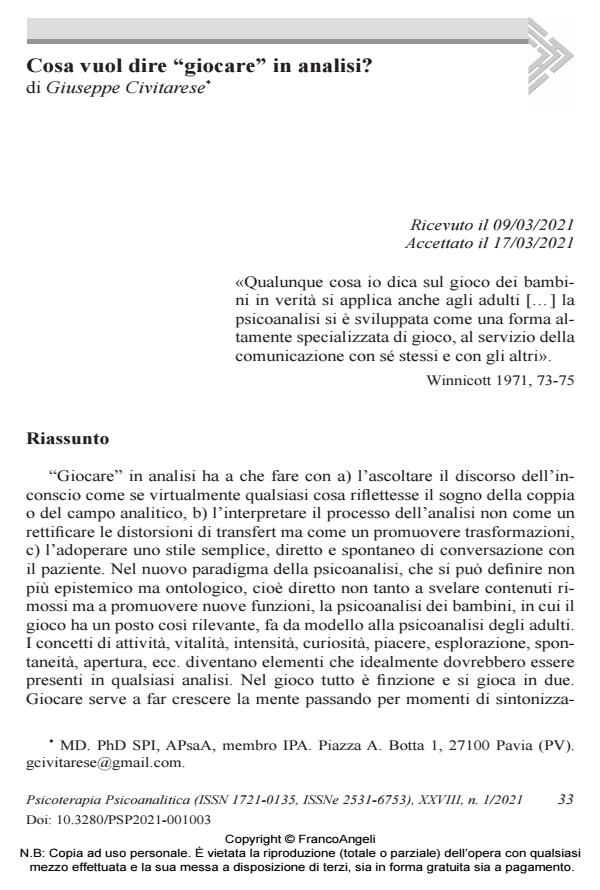What does playing in analysis mean?
Journal title PSICOTERAPIA PSICOANALITICA
Author/s Giuseppe Civitarese
Publishing Year 2021 Issue 2021/1
Language Italian Pages 23 P. 33-55 File size 239 KB
DOI 10.3280/PSP2021-001003
DOI is like a bar code for intellectual property: to have more infomation
click here
Below, you can see the article first page
If you want to buy this article in PDF format, you can do it, following the instructions to buy download credits

FrancoAngeli is member of Publishers International Linking Association, Inc (PILA), a not-for-profit association which run the CrossRef service enabling links to and from online scholarly content.
"Playing" in analysis has to do with a) listening to the discourse of the unconscious as if virtually everything reflected the dream of the couple or the analytic field, b) interpreting the process of analysis not as rectifying transference distortions but as promoting transformations, c) using a simple, direct and spontaneous style of conversation with the patient. In the new paradigm of psychoanalysis, which can be defined no longer as epistemic but as ontological, that is directed not so much to unveiling repressed contents as to promoting new psychic functions, the psychoanalysis of children, in which play has such an important place, serves as a model for the psychoanalysis of adults. The concepts of activity, vitality, intensity, curiosity, pleasure, exploration, spontaneity, openness, etc., become elements that ideally should be present in any analysis. In the game everything is fiction and it is played in two. Playing serves to make the mind grow through moments of emotional attunement (at-one-ment). Hence the need for the analyst to have up-to-date concepts in order to understand what is happening on the unconscious and shared level of the relationship.
Keywords: play, Bion, analytic field theory, transformation in play, at-onement, recognition.
- Percepire il cambiamento, percepire la continuità: note sull'autoanalisi Adriana Gagliardi, in PSICOTERAPIA PSICOANALITICA 2/2021 pp.29
DOI: 10.3280/PSP2021-002003
Giuseppe Civitarese, Cosa vuol dire "giocare" in analisi? in "PSICOTERAPIA PSICOANALITICA" 1/2021, pp 33-55, DOI: 10.3280/PSP2021-001003